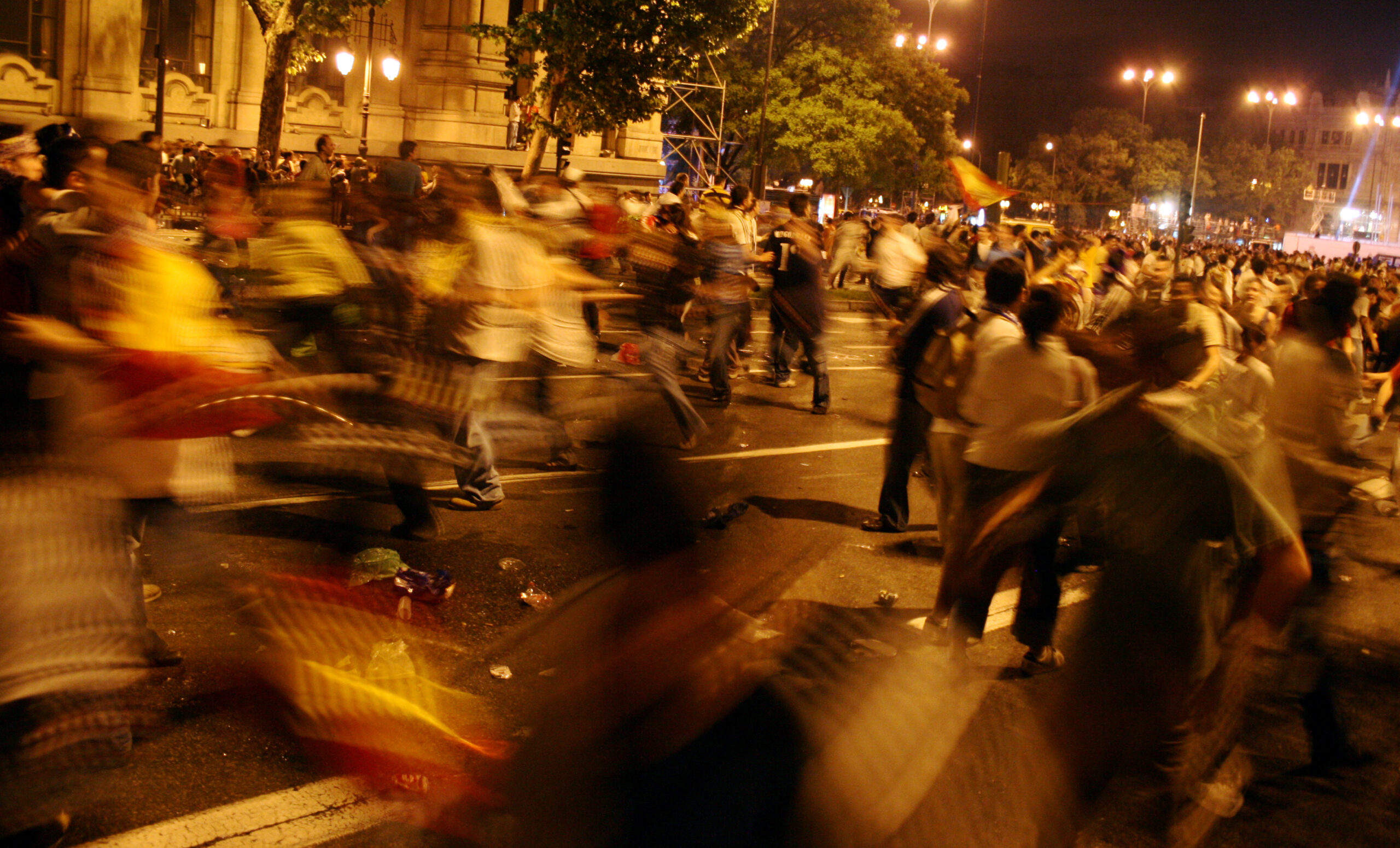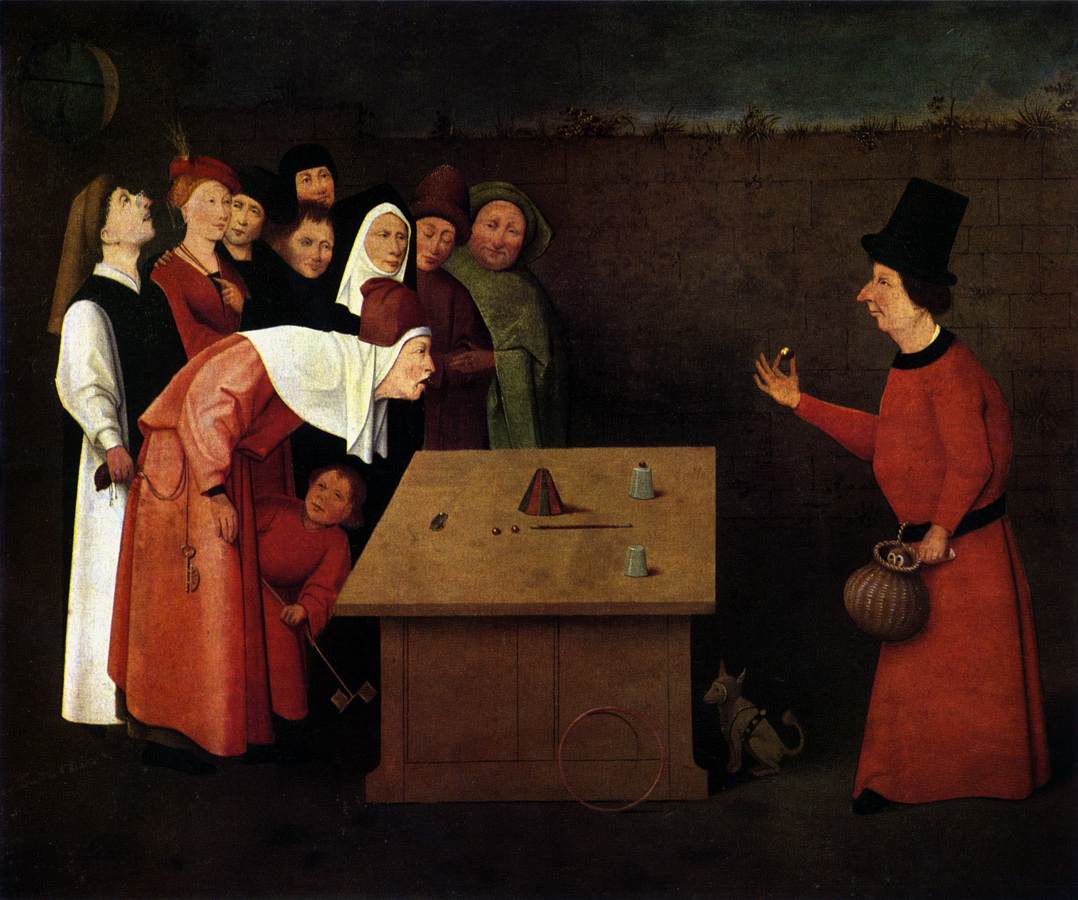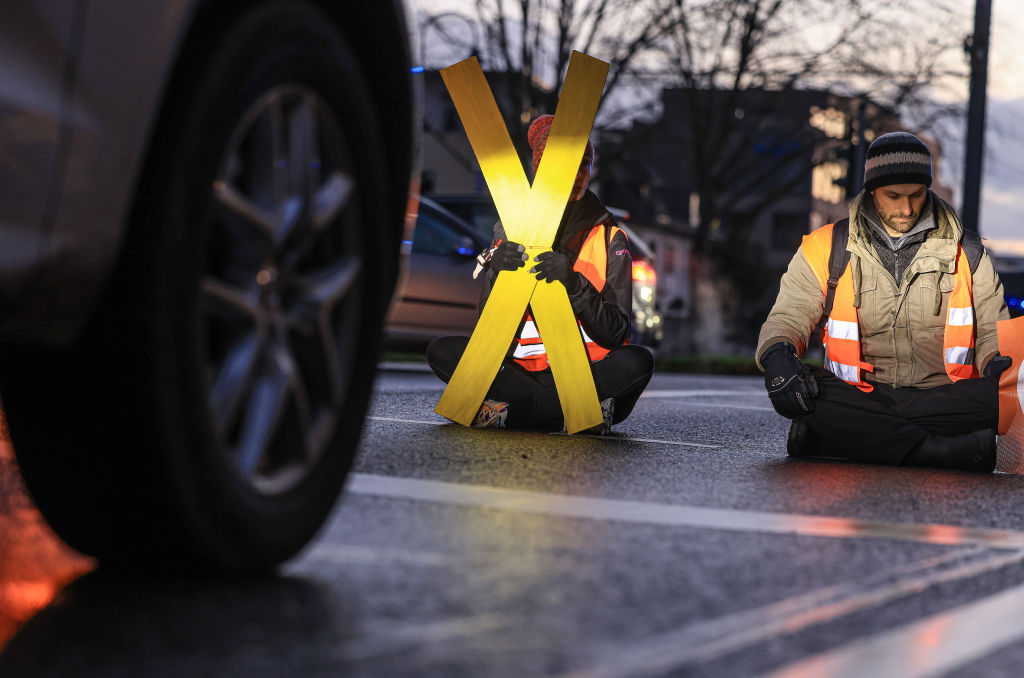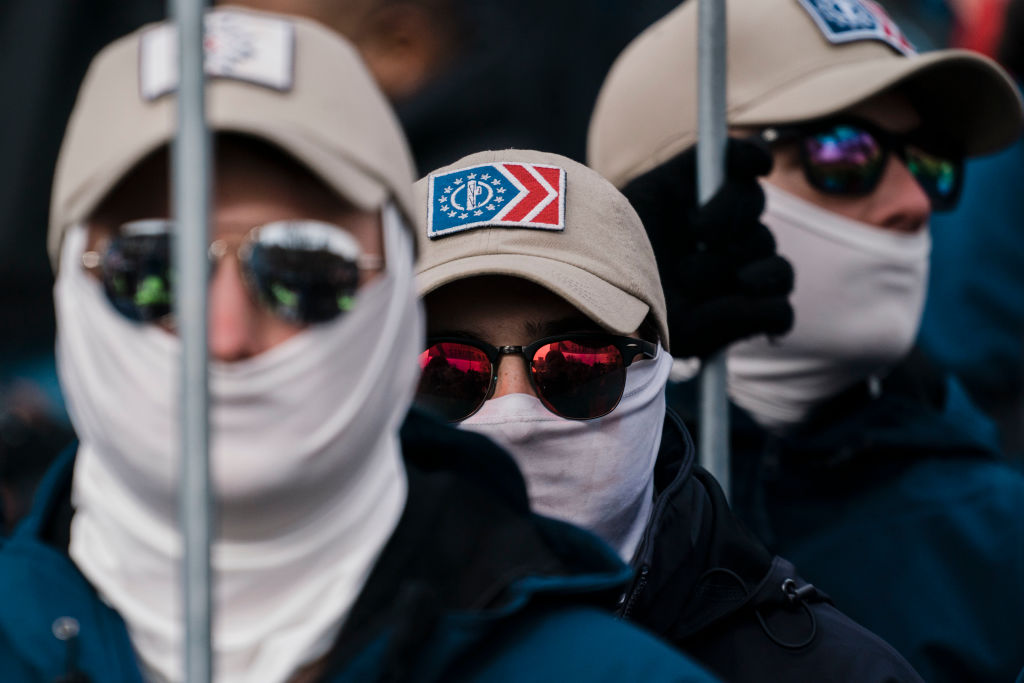The deal with the devil is made. Kamala Harris is determined to see it through.
Statistically Peaceful

The nation could be sliding into a state of nature.
Thomas Hobbes famously described the life of man without government—the “state of nature”—as being “solitary, poor, nasty, brutish, and short.” But Hobbes did not restrict his definition of the state of nature to a purely theoretical situation of anarchy. He also extended it to such time when “men live without other security than what their own strength and their own invention shall furnish them.” He suggests a civil war amongst men who “formerly lived under a peaceful government” as an example of how such a state might appear. It is these latter two points which are most significant for the fate of the present political moment in the U.S., for they suggest that the war of every man against every man could arise in the form of a decline in the personal security of individuals or in civil strife which impedes, constrains, or dissolves the government’s ability generally to protect those who live under its authority.
For the moment, at least, a new American civil war seems a remote possibility, although the fact that it’s a recurring topic of discussion suggests that the possibility is not as remote as might be desired. But the perception of a widespread decline in personal security is a very real and present issue, and only a perceived diminution of personal security is necessary for a Hobbesian state of nature to exist, because “continual fear” is enough to make living in such a state intolerable. Fear of violence from one’s neighbor doesn’t have to be rational to be real, and if there is no confidence that the state will protect you, people will arm themselves in preparation to counter threats of violence.
Thankfully, irrational fears for personal safety are not yet so widespread that they pose a threat to the endurance of American government, but the general perception of personal safety is on the decline, particularly following the protests and riots of 2020. When politicians and their allied press outlets described those events as “mostly peaceful,” their fastidiousness to statistical accuracy did not reassure Americans who were concerned about their safety. Instead, the government’s perceived minimization of an immediate and indisputable danger undermined confidence that the state would protect its citizens from violence. Many television news channels ran continuous coverage of burning cities and violent riots, despite reporting on the unfolding events as mostly peaceful in nature. Such descriptions were supported by the later report of the Armed Conflict Location and Event Data Project (ACLED) when it found that only 5% of over 10,000 protests between May 24 and August 22, 2020 involved violence. But the sudden occurrence of over 500 violent mass gatherings in the space of three months around the country represented a massive increase in violent, criminal conduct affecting countless innocent citizens and businesses.
Dismissing hundreds of incidents of violent, destructive behavior as “only 5%” of the therefore “mostly peaceful” riots is a use of statistical data so manipulative as to be mendacious. What matters to people on the ground is not that their burning city represents only a fraction of the sudden occurrence of tens of thousands of protests, but rather that their city is burning, that hundreds of such previously rare incidents are taking place, and that there are tens of thousands of protests—protests that might, at any moment, erupt into violence. It is the arrival of a new vector of violence that the terrified citizen fears, a means by which anarchy, arson, and murder may suddenly appear within and destroy a hitherto peaceful community. The government which dismisses these threats as statistically trivial is naturally perceived as unlikely to protect those at risk. When many of the same government figures and news media dismissed percentile statistical data and relied upon overall numbers when it suited their political objectives, as in the case of the COVID-19 pandemic, the perception that the government is uninterested in the safety of its citizens was further confirmed.
The sudden presence of hundreds of violent gatherings and tens of thousands of protests, often occurring with little or no pushback from the government (and sometimes with the explicit encouragement of government officials), must be put in the context of reported declines in violent crime and a sense that widespread political violence was, at least in America, confined to the past. In this context, the protests appear as a rupture or reversal of perceived trends toward greater peacefulness, thus heightening their impact upon individuals’ sense of personal security. The decline in confidence that the government would secure individual safety can be seen in the number of NICS firearm background checks, which reached an all-time high of nearly 39.7 million, representing a 40% increase over 2019. Nor was this increase merely due to the trend of modest annual increases in the number of checks, because the overall number of checks declined in 2021 and is on course to decline again in 2022.
If a government seeks to dismiss and minimize reasonable fears which have arisen in response to sudden and uncharacteristic violence, then the government is eroding belief in its ability to provide for the safety of its citizens and making instability and violence more rather than less likely. It’s true that most of our cities are not currently besieged by BLM and Antifa rioters, but the threat remains, and the people have now learned that the government is willing to use political violence as a lever and cudgel. With the collusion of servile media allies, the regime may succeed for a time in diminishing the overall volume of its critics, but the loss of confidence in its ability fairly to protect the populace or even to be truthful about basic on the ground realities could well prove more fatal indeed.
The American Mind presents a range of perspectives. Views are writers’ own and do not necessarily represent those of The Claremont Institute.
The American Mind is a publication of the Claremont Institute, a non-profit 501(c)(3) organization, dedicated to restoring the principles of the American Founding to their rightful, preeminent authority in our national life. Interested in supporting our work? Gifts to the Claremont Institute are tax-deductible.
How a fraudulent ruling class plundered our most precious inheritance.
Our elites seek a new nation conceived in violence.
Don’t be misled by peaceful protest.
Patriot Front may not technically be staffed by FBI agents, but the effect is the same.
It's not actually about Rittenhouse.






